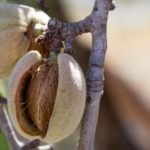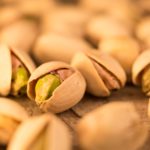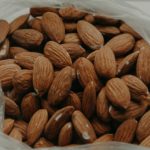From almonds and walnuts to pistachios and hazelnuts, growing top-quality tree nuts requires a lot of care. Growers who focus on these crops have their work cut out for them.
With the right nutritional program, growers can avoid common issues like alternate bearing, blanks, May-June nut drop and stick-tights at harvest, while maximizing yield, density and size.
The solution is in the science
By taking an analytic approach to plant nutrition, Agro-K empowers growers to measure key metrics and consequently manage their crop more effectively. Here are some things growers should consider during the current season, at harvest and when planning for the future.
Consider the Crop
Each operation is unique. Geographic location, specific crop, variety, climate and soil pH all have an impact on the crop plan and management program. Not every nutritional input is right for every grower. Knowing the ones that will have the most impact is essential to minimizing waste and reducing costs.
Test Don’t Guess
Tree nut growers have an impressive base of knowledge about their crop and its unique needs. But when issues arise, the exact cause isn’t always clear. It’s important for us to conduct several tests. For nut crops, soil, tissue and sap testing guide the nutritional program. Conducted throughout the season, these tests indicate what’s working and what’s a waste of resources. After harvest, these tests provide a report card and a roadmap for the upcoming season.
Apply on Time
Growers achieve the best results when they act based on the Five R’s: The Right nutrient applied at the Right time in the Right form in the Right mix targeting the Right place in the plant. One of the most common mishaps occurs when growers apply nutrients outside of the plant’s peak demand. The more accurate the timing, the more impactful the nutrient uptake.
For example, adequate nutrition and carbohydrate production via chlorophyll and photosynthesis are essential to pistachio tree development and reserves for the following year. Without it, the pistachio trees are prone to alternate bearing and producing blanks. The negative impacts are often misunderstood because the alternate bearing occurs the following year. To combat this issue, growers must use proper nutrition to build up the tree’s nutrient and carbohydrate levels the year prior.
For almonds, there are five critical yield points: set during bloom window, cell division, reducing the May-June drop, bulking the nuts in the summertime and reducing the stick-tights at harvest. By focusing on nutrition during these key crop phases, growers end up with larger, heavier nuts, an increased pack out and a bigger paycheck.
The right combination of nutrients (like phosphate, calcium, potassium, boron, molybdenum) also help to reduce tree stress. This ensures more nuts stay on the tree for harvest and are easier to shake off when the time comes. Fewer post-harvest nuts on the trees also reduces future pest problems by eliminating the hiding spots where navel orange worms prefer to overwinter.



